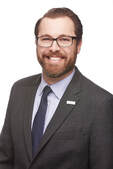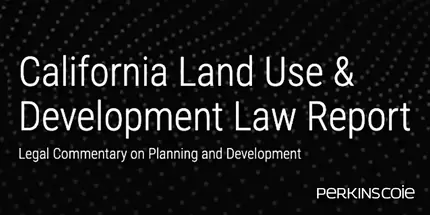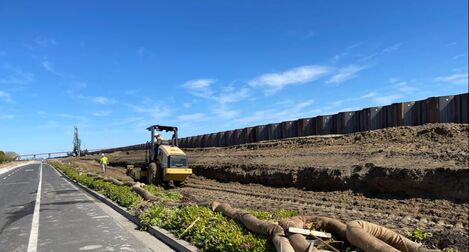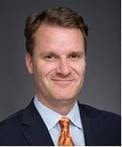Tim Haile, PE
Executive Director
Tim Haile was appointed as Executive Director of the Contra Costa Transportation Authority in December 2020 and is responsible for the overall management of the Authority, including implementation of projects and programs identified in CCTA’s voter-approved sales tax measure, the Growth Management Program, the Congestion Management Program, as well as policies and procedures, the board-approved budget, and all administrative functions.
He served as CCTA’s Deputy Executive Director for Projects since 2017 and has more than 23 years of experience in program management, public works and transportation projects. Tim was responsible for the delivery of the capital improvement program, implementation of projects identified in CCTA’s voter-approved sales tax measure, development of a new Transportation Expenditure Plan, as well as other projects funded from grant or other outside sources. He managed CCTA’s innovation portfolio, including partnerships at GoMentum Station, multiple grants from the United States Department of Transportation, the Innovate 680 program, and all aspects of program and project management. Prior to joining the Authority, he worked at Michael Baker International as the Inland Empire Transportation Manager, managing the overall transportation program for the region providing exceptional service to local agencies, stakeholders, and the California Department of Transportation.
Tim recognized for his dynamic thinking, leadership, innovation, proactive management style, technical acuity and ability to work in partnership with numerous stakeholders on large, multi-discipline projects building consensus, developing solutions to complex challenges and recommending policies. An expert in Caltrans design policies, procedures, and standards for transportation projects, he advised local agencies and stakeholders to navigate the complex project delivery process from project initiation through environmental, final design and construction.
Tim has been an active leader in the transportation industry and community, serving as the Communications Chair of the Transportation Research Board Managed Lanes Committee and Board Member of the California Transportation Foundation. A testament to his technical expertise in highway design, communication, and presentation skills, Tim served as an adjunct professor for the Highway Design Course at California State Polytechnic University, Pomona for over eight years. He is a registered Professional Engineer and earned his Bachelor’s Degree in Civil Engineering from California Polytechnic State University, Pomona.
About CCTA
The Contra Costa Transportation Authority (CCTA) works to plan, fund, and implement innovative transit programs that strengthen our diverse communities and improve the lives of residents. CCTA is Contra Costa’s designated Congestion Management Agency (CMA), responsible for putting programs in place to keep traffic levels manageable. Currently, the county’s transportation needs significantly exceed available revenue and over the next 30 years, our population will continue to grow which means the travel needs will continue to change. To confront this challenge in an efficient and sustainable way, CCTA funds, plans and delivers a wide variety of projects and programs to help manage traffic congestion and improve quality of life for commuters and residents.
These initiatives include the Highway 4 Widening Projects – a six-year effort that will reduce congestion and improve public transit access by doubling highway capacity and adding a new BART extension; and Innovate 680- a comprehensive suite of 6 projects along the I-680 corridor that when operating together will improve traffic flow and reduce congestion. In addition, CCTA is working to further smooth traffic in Contra Costa County by implementing advanced traffic management programs that encourage the use of connected and autonomous vehicles.
The Event:
Food and beverage buffet will be provided.
If the online registration window is closed, please email officers@southbayengineersclub.org to request a ticket. Thanks
Executive Director
Tim Haile was appointed as Executive Director of the Contra Costa Transportation Authority in December 2020 and is responsible for the overall management of the Authority, including implementation of projects and programs identified in CCTA’s voter-approved sales tax measure, the Growth Management Program, the Congestion Management Program, as well as policies and procedures, the board-approved budget, and all administrative functions.
He served as CCTA’s Deputy Executive Director for Projects since 2017 and has more than 23 years of experience in program management, public works and transportation projects. Tim was responsible for the delivery of the capital improvement program, implementation of projects identified in CCTA’s voter-approved sales tax measure, development of a new Transportation Expenditure Plan, as well as other projects funded from grant or other outside sources. He managed CCTA’s innovation portfolio, including partnerships at GoMentum Station, multiple grants from the United States Department of Transportation, the Innovate 680 program, and all aspects of program and project management. Prior to joining the Authority, he worked at Michael Baker International as the Inland Empire Transportation Manager, managing the overall transportation program for the region providing exceptional service to local agencies, stakeholders, and the California Department of Transportation.
Tim recognized for his dynamic thinking, leadership, innovation, proactive management style, technical acuity and ability to work in partnership with numerous stakeholders on large, multi-discipline projects building consensus, developing solutions to complex challenges and recommending policies. An expert in Caltrans design policies, procedures, and standards for transportation projects, he advised local agencies and stakeholders to navigate the complex project delivery process from project initiation through environmental, final design and construction.
Tim has been an active leader in the transportation industry and community, serving as the Communications Chair of the Transportation Research Board Managed Lanes Committee and Board Member of the California Transportation Foundation. A testament to his technical expertise in highway design, communication, and presentation skills, Tim served as an adjunct professor for the Highway Design Course at California State Polytechnic University, Pomona for over eight years. He is a registered Professional Engineer and earned his Bachelor’s Degree in Civil Engineering from California Polytechnic State University, Pomona.
About CCTA
The Contra Costa Transportation Authority (CCTA) works to plan, fund, and implement innovative transit programs that strengthen our diverse communities and improve the lives of residents. CCTA is Contra Costa’s designated Congestion Management Agency (CMA), responsible for putting programs in place to keep traffic levels manageable. Currently, the county’s transportation needs significantly exceed available revenue and over the next 30 years, our population will continue to grow which means the travel needs will continue to change. To confront this challenge in an efficient and sustainable way, CCTA funds, plans and delivers a wide variety of projects and programs to help manage traffic congestion and improve quality of life for commuters and residents.
These initiatives include the Highway 4 Widening Projects – a six-year effort that will reduce congestion and improve public transit access by doubling highway capacity and adding a new BART extension; and Innovate 680- a comprehensive suite of 6 projects along the I-680 corridor that when operating together will improve traffic flow and reduce congestion. In addition, CCTA is working to further smooth traffic in Contra Costa County by implementing advanced traffic management programs that encourage the use of connected and autonomous vehicles.
The Event:
Food and beverage buffet will be provided.
If the online registration window is closed, please email officers@southbayengineersclub.org to request a ticket. Thanks










